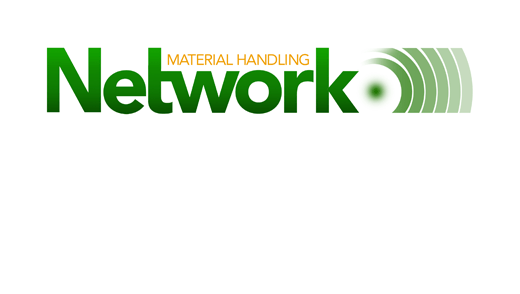Published November 3, 2020
In April, I wrote a 27-page white paper entitled “Restarting the Economy: Guidance for Public and Private Leaders.” In this paper, I explain for each company-based on their prior performance-in each industry sector the steps they must take to get their company back on track. At the highest level there are four categories of firms:
- Doom to Boom: Firms that were weak going into COVID-19 that are now doing well, such as Lysol and Clorox.
- Boom to Boom: Firms that were strong going into COVID-19 that continue to do well, such as Walmart and Amazon.
- Boom to Hibernate: Firms that were strong going into COVID-19 that have been patient for their business to return, such as Marriott and Southwest Airlines.
- Doom to Tomb: Firms that were weak going into COVID-19 that have gone out of business, such as Gold’s Gym and Brooks Brothers.
I have watched many firms in the first two categories that followed my guidelines that have achieved great success. At the same time, I have watched several firms that followed my guidelines that have not been successful. I saw three potential reasons for these firms following my guidelines and not being successful:
- My guidelines were wrong
- The firm’s categorization was inadequate
- My guidelines were right but incomplete
The process I went through to reach my conclusion involved interviews with over 100 senior executives. What I concluded is that the third reason was correct: my guidelines must be pursued to be successful, but just pursuing my guidelines would not ensure success. Or stated in other words, my guidelines were necessary but not sufficient. The next obvious question then is what is the missing factor to add to my guidelines to make them sufficient? I wish the answer to this was easy to describe, but unfortunately it is intangible. The answer has to do with leadership, attitude and resilience (LAR). Here is my best attempt at being more descriptive of LAR:
- Leadership: Strong leadership, effective communications and achieving alignment are required to go Doom or Boom to Boom.
- Attitude: A positive, optimistic, aggressive and entrepreneurial attitude is required to go Doom or Boom to Boom.
- Resilience: Adapting well in facing adversity, toughness, persistence and the ability to see meaning and opportunity in difficulties are required to go Doom or Boom to Boom.
The best time to view the LAR of an organization is in times of disruption. In fact, here is what I have learned about LAR and the seven-step process that occurs as a disruption engulfs an organization:
- Alert: LAR organizations are aware of their surroundings and continuously scan their environment. They “read the tea leaves” and “watch the smoke signals.” They anticipate coming disruptions and have begun planning for the disruption. Sometimes forecasts are received of ongoing disruptions. Hurricanes are often tracked weeks before they make land and tornadoes are often predicted hours ahead of them striking. Unfortunately, for many leaders, disasters like earthquakes and pandemics present no signs of them happening. But LAR companies can anticipate even these events. History is clear on things like hurricanes, tornadoes and earthquakes with respect to where they occur. Similarly, some LAR leaders anticipated COVID-19 or at least were alerted while the pandemic was still only in China and began preparing weeks or months before the pandemic actually landed in their location. LAR organizations have active disaster recovery plans, scenario plans, contingency plans and are pre-planning for disruptions of all kinds. These pre-plans give LAR organizations a head start and the ability to address disruptions much more successfully than non-LAR organizations.
- Impact: The alert step is pre-disruption; the impact step is the disruption. The impact step is when the hurricane comes ashore, the tornado touches ground or the first case of COVID-19 is reported in your organization. The impact often begets uncertainty, confusion and chaos. People feel vulnerable as well as a lack of control and security. The impact is often a time of high activity and low productivity. To the contrary, in a LAR organization, there is a waiting checklist of prioritized steps to follow: the who, what, when and where of the impact and the immediate needs, emergencies, responses and risks. An important LAR activity that is always a high priority is communications. Facts must be shared quickly and accurately, and leadership must be visible and actively engaged.
- Response: In non-LAR organizations, the chaos of the impact step overflows into the response step. People become emotional and enter a mode of self-preservation. However, leaders of LAR organizations ensure lines of communication are open and accurate and that everyone understands the status of the disruption, who is responsible for what decisions and when the next update will be provided. At this critical time, LAR organizations move deliberately, making sure that decisions and actions do not make things worse and all emergency, medical, food, water and transportation needs are addressed.
- Rehabilitation: The goal of the rehabilitation step is to stabilize the organization. LAR organizations will maintain and communicate clear problem and resolution tracking. In this step, the communications will extend beyond the employees of the organization to include customers, suppliers and all stakeholders. The focus of this step goes from addressing the impacts of the disruption to getting the organization operating again. Many important decisions and lots of hard work must occur in this step to restore the organization’s ability to perform. Speed is important but ensuring both short- and long-term issues and concerns are fully addressed is also a top priority.
- Recovery: LAR organizations embrace the disruption as an opportunity to build back better; to be entrepreneurial and identify improvements in how things are done. Recovery is not about going back to where you were, but about engaging the appropriate people to create a new normal that responds to the lessons learned from the disruption. Again, active communications are very important at this time, and recognition of the team doing the hard work of rehabilitation and recovery is also very important.
- Risk Mitigation: As LAR organizations move through the steps of rehabilitation and recovery and into reinvention, they want to pause and reflect on the disruption they have just been through and evaluate what they could do going forward to prevent or reduce the negative impact of future disruptions. Although non-LAR organizations do not want to spend the time to pause as they overcome the last disruption, LAR organizations will see this as a rare opportunity to document their lessons learned and better prepare their organization to handle future disruptions.
- Reinvention: Non-LAR organizations will not be thinking about reinvention at this point-they will be stepping back and counting their blessings for making it through the disruption. While it is good to count your blessings, it is also good to realize that it is not just time to respond, rehabilitate and recover, but to use the momentum of the great job the organization has done to get you where you are, and realize how the disruption has changed you, your organization and your competition. LAR organizations will grab hold of this opportunity and go beyond building back better to fully review what they are doing and all they have learned through the disruption to reinvent themselves. This reinvention demands creativity, innovation and entrepreneurship, and requires the organization to challenge the status-quo and use blue-sky, out-of-the-box and breakthrough thinking to create a new way of driving value creation and profitable growth.
As the bumper sticker says, “Stuff Happens.” And in today’s world, stuff happens on a more frequent basis than ever before. So there is no use bemoaning your disruption-everyone and every organization will have disruptions and stuff will happen to you. The old saying, “It’s not what happens to you that matters, but how you respond to it” is 100% true. LAR organizations respond to disruption and come out better than before it. LAR was the missing component in my initial disruption response to COVID-19, but being a LAR person, I have learned and improved. I wish you and your organization a LAR future.



